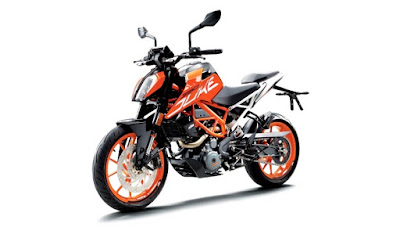YouTube Tricks
We will try our best to give you our best . you can follow our tips . it will help you to be a success youTuber
Saturday, August 19, 2017
Studying Abroad in Morocco: Everything You Need to Know
Benefits of Studying Abroad in Morocco
Website
Global Educational Opportunities
Morocco is a terrific starting point in which to build cross-cultural relationships and a deep understanding of the Muslim world.
If you prefer a more diverse curriculum, enroll in the Al-Akhawayn University in Ifrane, where you can learn anything from Berber History to engineering and social studies.
Food & Drink in Morocco
Photo by Naomi H., Cross-Cultural Solutions Morocco Alum
The Food is Amazing
On the coast, the abundance of winning seafood platters mix it up enough when you want something a bit different. And the best bang for your buck that you can find just about everywhere is the Moroccan “sandwich” — chorizo sausage, olives, lettuce and fries stuffed in flat bread. Is your mouth watering yet?
It’s Easy to Get Around
A car culture is easy enough to spot, with stretching highways and the inability to get around anywhere without a car. Fortunately, Morocco has none of these faults. The rail network is excellent but will take you insofar as main cities like Casablanca, so if you want to head off the beaten track, hop on a bus or taxi. You can easily spend your weekends exploring nearby towns or hiking in the Atlas Mountains. No matter where you study, you’ll never be more than a few hours to somewhere else new.
Experience Old World Charm while Studying Abroad in Morocco
Photo by Emily P., Travel for Teens Morocco Alum
Be Charmed by the Old World
You're Off the Beaten Path
Additional Things to Know Before You Study Abroad in Morocco
Additional Things to Know about Studying Abroad in Morocco
Photo by Nina W., CIEE Morocco Alum
Outside the classroom, your study abroad experience gives you a chance to live like a local in a foreign country. This may seem daunting in Morocco, but here's what you need to know:
1. Language
The official language in Morocco is Modern Standard Arabic, though this will only get you so far, as it’s used only in an official capacity. Moroccan Arabic, aka Darija, is the language of choice and a unique dialect of the region with French, Spanish and Berber influences. If you don’t know either, you can usually get by in French, or in certain places, Spanish. Regardless of your speaking abilities, I advise spending at least a couple weeks familiarizing yourself with the Arabic writing system, the alphabet and numbers. Knowing the basics will help you get around, to decipher signs and schedules.
2. Haggling
In Morocco, haggling is a way of life. Moroccans love to haggle in the Medina markets, and as you’re a foreigner, they’ll likely start with a high price. It’s best to jump in headfirst when negotiating. Counter with a crazy-low price, and go back and forth at least three times. Some Moroccans will throw in free gifts to sweeten the deal, but these shouldn’t influence your decision! In some touristy areas, such as Fez, shopkeepers can be aggressive and may bully you into purchasing. Just walk away, and find a more polite competitor. Ultimately you should pay what you’re comfortable paying. Do some research before you settle -- check out other shops, to see their prices, or try the fixed price shops -- these can give you an idea of the maximum you should pay.
Getting Oriented to Study Abroad in Morocco
Photo by Mariana G., Semester at Sea Alum
3. Getting Oriented
When you arrive, it’s helpful to pick up a map of the city that will orient you. I recommend carrying around a knowledgeable guidebook, like Lonely Planet or Rough Guides. Tangier, Casablanca, Fez, and Marrakech are the jewels of Morocco and fun to explore. But it’s the smaller cities that you’ll engage with the laid-back lifestyle and local courtesy: relaxed Meknes, the market town of Taroudannt, sandy beaches at Tetouan, painted rocks at Tafraoute and the ancient desert town of Ouarzazate. Study the map before you go until you can pick out the bus and train stations, taxi stands, the Medina and main streets.
4. Surprising Weather
Studying Abroad in Morocco: Everything You Need to Know
A car culture is easy enough to spot, with stretching highways and the inability to get around anywhere without a car. Fortunately, Morocco has none of these faults. The rail network is excellent but will take you insofar as main cities like Casablanca, so if you want to head off the beaten track, hop on a bus or taxi. You can easily spend your weekends exploring nearby towns or hiking in the Atlas Mountains. No matter where you study, you’ll never be more than a few hours to somewhere else new.
Experience Old World Charm while Studying Abroad in Morocco
Photo by Emily P., Travel for Teens Morocco Alum
Be Charmed by the Old World
Morocco is Affordable
1. Language
The official language in Morocco is Modern Standard Arabic, though this will only get you so far, as it’s used only in an official capacity. Moroccan Arabic, aka Darija, is the language of choice and a unique dialect of the region with French, Spanish and Berber influences. If you don’t know either, you can usually get by in French, or in certain places, Spanish. Regardless of your speaking abilities, I advise spending at least a couple weeks familiarizing yourself with the Arabic writing system, the alphabet and numbers. Knowing the basics will help you get around, to decipher signs and schedules.
2. Haggling
In Morocco, haggling is a way of life. Moroccans love to haggle in the Medina markets, and as you’re a foreigner, they’ll likely start with a high price. It’s best to jump in headfirst when negotiating. Counter with a crazy-low price, and go back and forth at least three times. Some Moroccans will throw in free gifts to sweeten the deal, but these shouldn’t influence your decision! In some touristy areas, such as Fez, shopkeepers can be aggressive and may bully you into purchasing. Just walk away, and find a more polite competitor. Ultimately you should pay what you’re comfortable paying. Do some research before you settle -- check out other shops, to see their prices, or try the fixed price shops -- these can give you an idea of the maximum you should pay.
Getting Oriented to Study Abroad in Morocco
Photo by Mariana G., Semester at Sea Alum
3. Getting Oriented
When you arrive, it’s helpful to pick up a map of the city that will orient you. I recommend carrying around a knowledgeable guidebook, like Lonely Planet or Rough Guides. Tangier, Casablanca, Fez, and Marrakech are the jewels of Morocco and fun to explore. But it’s the smaller cities that you’ll engage with the laid-back lifestyle and local courtesy: relaxed Meknes, the market town of Taroudannt, sandy beaches at Tetouan, painted rocks at Tafraoute and the ancient desert town of Ouarzazate. Study the map before you go until you can pick out the bus and train stations, taxi stands, the Medina and main streets.
4. Surprising Weather
Perhaps surprisingly, Morocco can be quite chilly in the winter. The winds blow in particularly rough on coastal cities, like Casablanca and Tangiers. Snow is common in the mountain villages, especially around the ski resort of Ifrane. Dress warmly and in layers. Fortunately, you’ll be able to pick up a lot of inexpensive clothes at the markets, so there’s no need to pack a lot. In the summer, heat climbs rapidly; Fez can get as low as 6C in January, but as high as 34C in August
Studying Abroad in Morocco: Everything You Need to Know
Morocco is a terrific starting point in which to build cross-cultural relationships and a deep understanding of the Muslim world.
There are several places to study in Morocco, primarily in the main cities. AMIDEAST has an Area & Arabic Language Studies Program for language learners. Students live with Arabic-speaking families in the capital city of Rabat and learn Modern Standard and Moroccan dialect in class. Rabat is also home to the Center for Cross-Cultural Learning, IES Abroad and CIEE culture programs that promote Moroccan studies and language. There are also summer intensive workshops in Francophone and Arabic studies.
Name
Tuesday, August 8, 2017
KTM Duke 125 2017 Specification
Engine
Engine type: liquid-cooled, 4-stroke, DOHC, 4-valve single
Displacement: 125cc
Bore x stroke: 58 x 47.2mm
Compression ratio: 12.8:1
Maximum power: 15bhp @ 10,000rpm
Maximum torque: 9lb·ft @ 7000rpm
Fuel system: fuel injection, 33mm throttle body
Transmission: 6-speed, chain final drive
Frame : tubular steel trellis
Rake: 25°
Trail: 95mm
Front suspension: 43mm upside-down telescopic forks, no adjustment
Rear suspension: monoshock, adjustable preload
Front brake: 300mm disc, 4-piston caliper
Rear brake: 230mm disc, 1-piston caliper
Front tyre: 110/70 ZR17
Rear tyre: 150/60 ZR17

Seat height: 830mm
Wheelbase: 1357mm
Ground clearance: 185mm
Kerb weight: 150kg (est)
Fuel capacity: 13.4 litres
Friday, August 4, 2017
How to get 5,000 views Easily and secure.
After being a part of YouTube for a while, you might have reached a point where you'd be super happy for more views and subscribers. To gain a wider and bigger viewership, you need to produce a more sophisticated and attractive YouTube channel. This can be achieved by following these suggestions, many of which are overlooked by many users when trying to become successful on YouTube.
 1.
1.Craft a recognizable channel name. It is best to start off from scratch when creating a channel dedicated to what you think could be successful on YouTube. Don’t just add new videos after reading the top ten tips to your badly named channel (e.g. catlover99), with videos of your cat from 2003 still available to view. Use a channel name that is well thought out, to show a professional and iconic channel for users to remember.
For example, a boy named John Smith who likes to sing covers could use numerous channel names like these: JohnSmith, JohnCovers, SmithSings. All easy to remember.
Users will search for your videos and you will soon show up in the first search page rankings and in the auto-remember search bar. That will bring a lot of website traffic to your channel. As well as this, if you do your research into what's trending with current subjects relating to your videos, you can get high views from posting the first video to a new topic (e.g. the first cover song of a certain artist).
 2.
2.Promote yourself and your brand. Self promotion is of the utmost importance. Some sites will share out channels for free. YouTube gives you space around your channel to put in a cool layout, so use this space to your advantage. Many successful users use text and images to show their subscribers and followers their brand.
The "brand" refers to the way that you promote yourself and/or your company/gig and can help define who you are and what you do.
Attractive graphics can bring people back to channels, and help users remember you/your company, which is very important to becoming successful on YouTube.
 3.
3.Name and categorize appropriately. Naming and categorizing your videos correctly is vital to keeping users happy with your content. People like a descriptive title, and a description that's evaluative and truthful. If you lie in your title, you will get negatively thrashed in the ratings bar (putting viewers off instantly). So be sure to keep titles short whilst tagging videos effectively with relatable words to your videos such as: "car", "vehicle", "lorry". Many blogs refer to these techniques as ‘tricks of the trade’. However, in reality, YouTube originally set out the idea of tagging correctly as common sense, and it effectively names your videos appropriately, therefore you will get views from the correct audience. If you don’t you will fail, and end up posting videos in bad categories (like tagging a music cover with: ‘reviews’ ‘technology’... not good.)
When you first start out on YouTube, don’t expect any more than three ratings per video.
 4.
4.Produce good quality videos. When creating a video, produce high quality and fresh content for your audience to look forward to. If you keep a schedule of 'one video a week’ you can spend time working on your video. When shooting a video, there are many methods to success. If you are shooting yourself at a desk, be sure to buy a (white) light to sit in front of you and a high-definition camera to record your beautiful face. Nothing is more annoying than a blurry video, which has been shot in a dark room with rubbish sound and no faded music in the background.
5.
Believe that yourself. This simple yet vital aspect can help you to succeed when putting hard work into building and maintaining your channel.
Thursday, July 20, 2017
Thursday, July 13, 2017
Monday, July 10, 2017
Friday, July 7, 2017
7 apps that won't make your kids dumber
1. BrainPOP
2. DragonBox Elements
3. Duolingo
4. The Human Body
5. Professor Astro Cat’s Solar System
6. Star Walk 2 Night Sky Map: Watch Stars and Planets
7. Vanido Singing Coach
Subscribe to:
Posts (Atom)
Studying Abroad in Morocco: Everything You Need to Know
Benefits of Studying Abroad in Morocco Website Global Educational Opportunities Morocco is a terrific starting point in which to buil...

-
Engine Engine type: liquid-cooled, 4-stroke, DOHC, 4-valve single Displacement: 125cc Bore x stroke: ...
-
Shutdown Window PC is a simple task, but in this post we make this simple task more interesting for you. In this post, we collect 10 best...
-
Benefits of Studying Abroad in Morocco Website Global Educational Opportunities Morocco is a terrific starting point in which to buil...
-
1. BrainPOP 2. DragonBox Elements 3. Duolingo 4. The Human Body 5. Professor Astro Cat’s Solar System 6. Star Walk 2 Night Sky Map: ...













